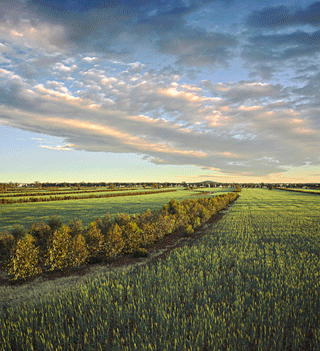
|
Published: 13 February 2012
Landholders gravitate to carbon farming
The number of landholders investigating carbon sink opportunities with CO2 Australia, the largest provider in the sector, has increased by 681 per cent since the introduction of the Federal Government’s Carbon Farming Initiative (CFI) in August 2011.

|
|
Integrated belt carbon plantings in a cropping program at ‘Currawonga’, Condobolin NSW, planted by CO2 Australia in 2006/07 for Eraring Energy. Credit:
CO2 Australia
|
CO2 Australia has more than 22 000 hectares of carbon sink plantings (equating to more than 33 million trees) under its management and is the largest and most experienced operator in the sector.
‘Over the last six months, we’ve seen a massive increase in the number of farmers asking about establishing carbon sinks on their farms,’ says CO2’s Mark Ritchie.
‘A number of landowners are enquiring about registering existing tree plots for carbon credits for the CFI. However, in the vast majority of cases these plantings are ineligible for the federal government scheme.’
Benefits of tree-based carbon sinks on farms can extend beyond income from carbon sequestration. Trees on farms can function as shelter for livestock, and may also reduce waterlogging, salinity and wind erosion. Trees can be planted in belts, allowing farming to occur between the tree rows.
Another reason landholders have not been able to register past tree plantings with the CFI is that most plantings under CO2 Australia’s management consist of a small range of mallee trees.
‘Mallee trees allow us with certainty to determine the amount of carbon to be sequestered,’ says Mr Ritchie. ‘Mallee trees have a long lifespan and are also fire-tolerant. They will regrow after a fire, so any loss of carbon is temporary.’
He says another advantage of mallee trees is that they can handle harsh climatic conditions and are drought-tolerant.
The minimum landholding set aside for a plantation under CO2 programs is 50 hectares (125 acres) and the life of the agreement is usually 100 years, which gives certainty to the amount of carbon which will be sequestered from the trees.
CO2 Australia has been operating since 2004 and was the first organisation to achieve accreditation for reforestation projects under both the NSW Greenhouse Gas Reduction Scheme and the Federal Government’s former Greenhouse Friendly™ Program.
Source: CO2 Australia



